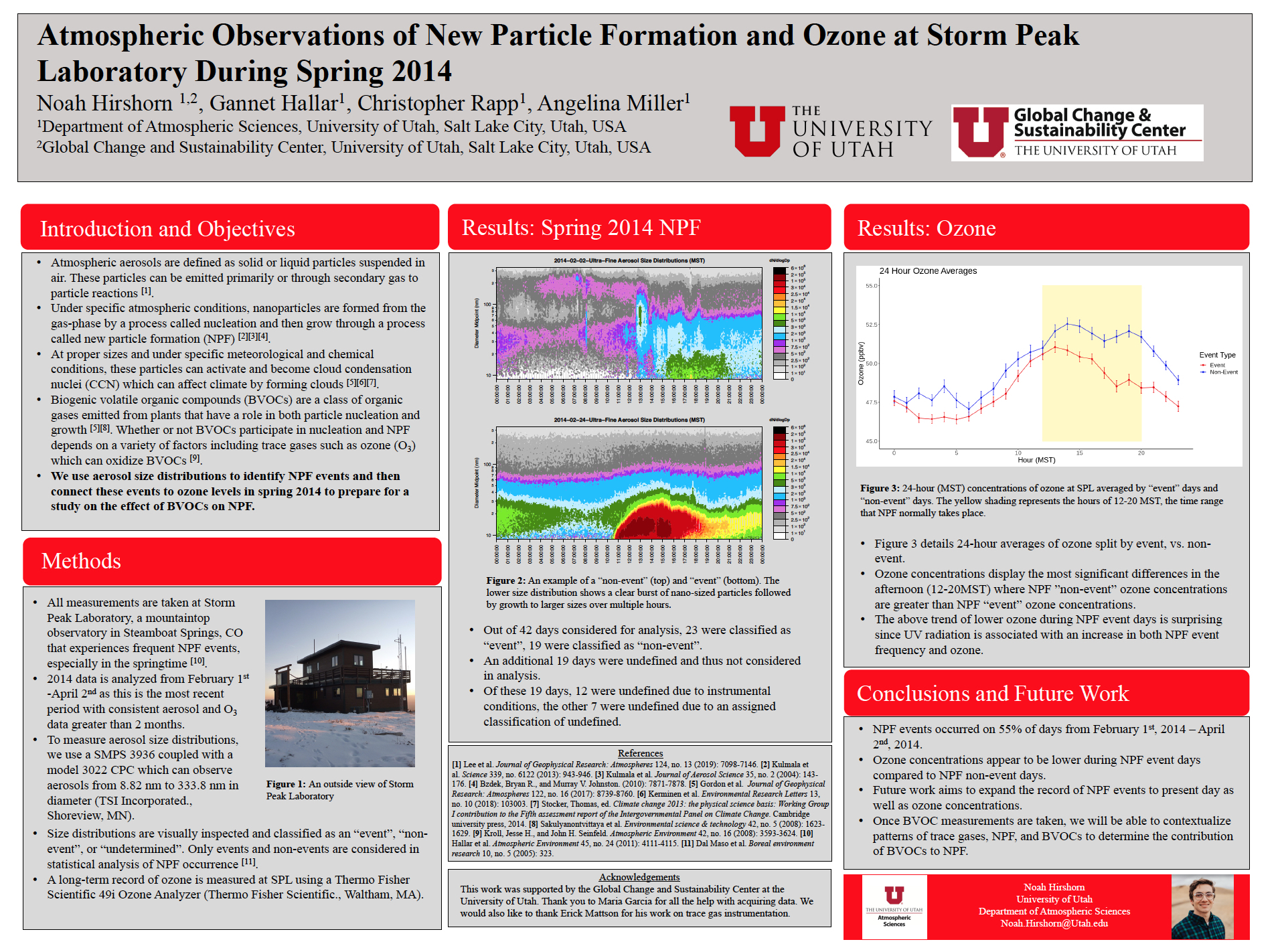Atmospheric Observations of New Particle Formation and Ozone at Storm Peak Laboratory During Spring 2014
-Noah Hirshorn, Gannet Hallar, Christopher Rapp, Angelina Miller
[bs_collapse id=”collapse_a8b1-52cc”]
[bs_citem title=”Bio” id=”citem_bd43-fde1″ parent=”collapse_a8b1-52cc”]
I am a GCSC Fellow and first year master’s student in The Department of Atmospheric Sciences working with Dr. Gannet Hallar as part of the Hallar Aerosol Research Team (HART). My research interests include atmospheric particle formation, atmospheric chemistry, and cloud formation. I am passionate about science communication and am always working to ensure that my research can be easily understood by a wide audience. In my free time I enjoy cycling, snowboarding, reading, and spending time exploring Utah.
[/bs_citem]
[bs_citem title=”Abstract” id=”citem_4ca1-2a2e” parent=”collapse_a8b1-52cc”]
Under specific atmospheric conditions, nanoparticles are formed from the gas-phase by a process called nucleation and then grow through a process called new particle formation (NPF). At proper sizes and under specific meteorological conditions, these particles can activate and become cloud condensation nuclei (CCN) which can affect climate by forming clouds. We use aerosol size distributions to identify NPF events throughout the spring of 2014 at Storm Peak Laboratory (SPL) in preparation for a larger study focusing on the contribution of biogenic volatile organic compounds (BVOCs) to NPF. SPL is a high-altitude research station in Steamboat Springs, CO that sees NPF events on 52% of days, with the highest frequency in springtime. We further investigate ozone (O3) since O3 and BVOC reactions may reduce the volatility of the chemical products allowing them to condense onto pre-existing particles or participate in the nucleation process.
[/bs_citem]
[/bs_collapse]
Watch my research presentation below.

